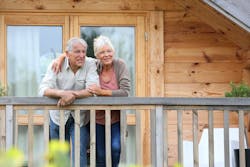Demand for Aging-in-Place Design Poised to Grow
The U.S. Census Bureau predicts Americans aged 65 and above will outnumber those under the age of 18 by 2034. The growing population of older adults comes with an increased importance on universal and aging-in-place home design principles. Many times when age-appropriate changes are made to a home, it comes after an incident or diagnosis, says the New York Times. The AARP encourages older adults to consider making changes to their homes to accommodate themselves as they age, such as task lighting in the kitchen, multi-height countertops, non-slip tiles, and grab bars. After all, the majority of Americans want to stay in their homes and communities, but their homes will need to adjust to their changing lifestyles.
Dr. Rodney Harrell, the vice president for Family, Home and Community at AARP, says intentional planning to create an ideal space to age in place can be started at any time.
“When we’re not planning ahead we need to react quickly,” said Dr. Harrell, who added that the best homes integrate universal design elements that can accommodate life for aging, but also unexpected illness, injury or disability. “The vast majority of people want to stay in their homes as they age, and most homes in this country aren’t designed to allow that to happen.”
There are a growing number of resources that can help in this planning process.
AARP recently introduced HomeFit, a free augmented reality app on iOS that can scan a room and suggest improvements to help turn a house into a “lifelong home,” free from safety and mobility risks. It is an extension of the organization’s extensive HomeFit Guide, which is available online.
There are also certified aging-in-place specialists, a wide range of professionals including remodelers, designers, architects and occupational therapists, who can recommend modifications to help people live independently in their home. This designation was developed in 2002 by the National Association of Home Builders in collaboration with AARP and other experts. Specialists can be searched by state at nahb.org, which offers a three-day certification program.
